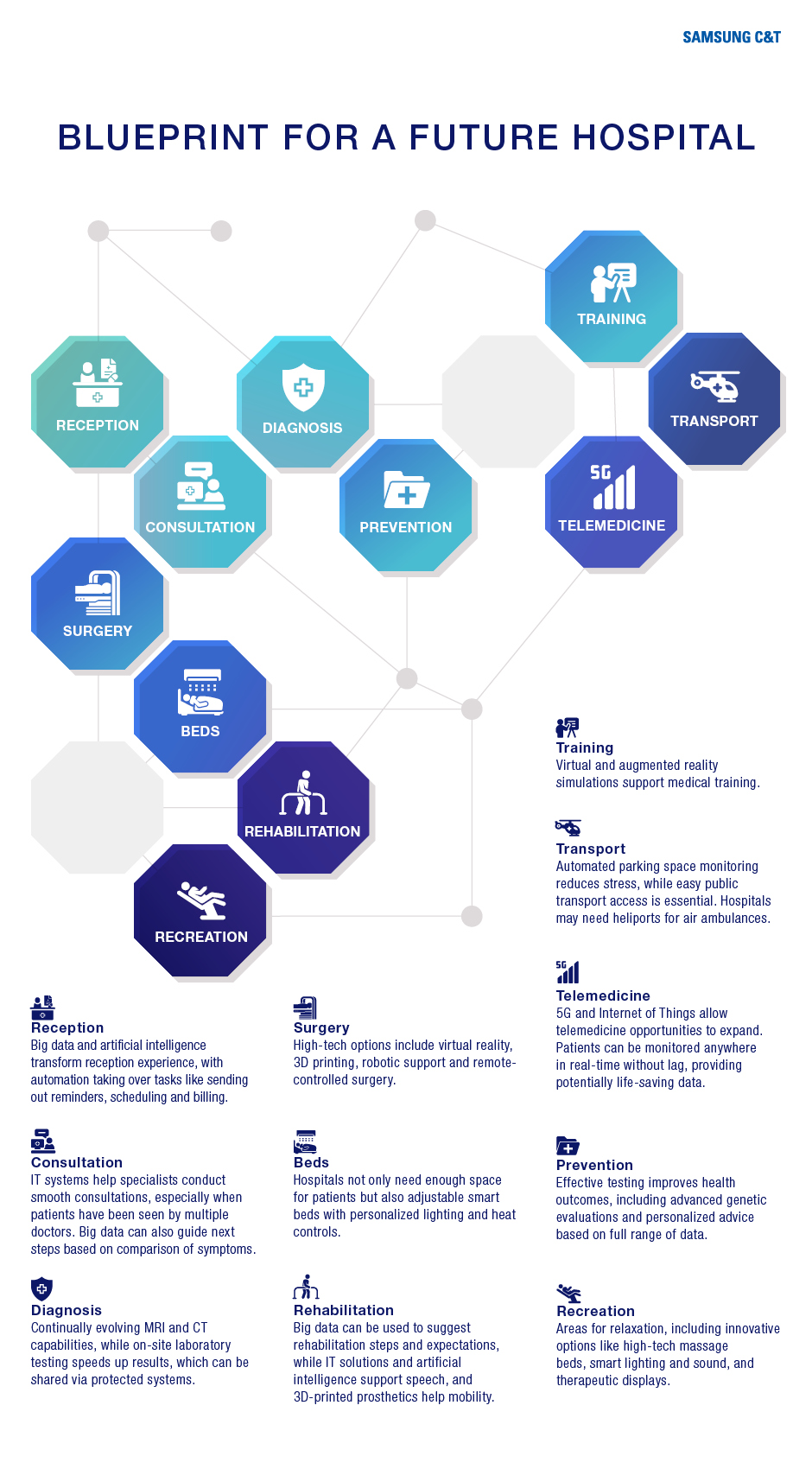Ensuring global access to healthcare is not just a distant dream, but one of the clear targets among the United Nations’ Sustainable Development Goals by 2030. Other nations might find inspiration in the case of South Korea, which has developed some of the world’s most advanced medical facilities over a relatively short period.
At the individual level, hospitals must consider a lot of factors, from planning and design to patient care and effective management systems. This process can also be made more efficient through IT advancements such as digitalization and telemedicine.
Aside from infrastructure and systems, hospitals seek to be places of healing and even joy. So, what does it take to create a hospital from the ground up?
Critical things to consider when establishing a new hospital
It usually takes several years to open up a new hospital. There should be thorough planning in order to safely meet construction deadlines and fulfill the needs of interested parties for a smooth operation.
So, the first thing to do at the project development stage is to establish a solid concept including researching the area where the hospital is to be set up and necessary resources for the facility. Next, the very basic level of launching a new hospital requires coming up with the most realistic and competitive proposal based on what resources are needed. The competitiveness of the project depends on how well one can secure required funds from investors. As an international enterprise, Samsung C&T Trading & Investment Group offers ways to best accommodate various stakeholders’ needs. Then, there is a need to draw clear boundaries between medical and non-medical systems. All of the above will be reflected in a contract to be agreed by all parties.
At the project execution stage, the major task is to work together with a construction company to meet the building schedule on time. This stage consists of figuring out the characteristics of the location and the country’s environment as well as developing an efficient IT system for the operation of the hospital. Constructing a hospital is unlike building other facilities, such as a general shopping complex installed with electricity and water supply. The process of launching a new hospital concludes after those tasks have been taken care of, in addition to devising a portfolio of medical equipment, which also needs to be delivered and set up.
The most crucial part when it comes to operating a hospital is to run the facility while maintaining it in the best possible state. In order to accomplish this, Samsung C&T offers a training and education program in collaboration with university hospitals to advise physicians on the efficient use of medical devices and systems. Lastly, a key part of the project operation stage is to provide a manual on manpower control as well as on non-medical segments, including F&B and management of medical waste, and then to regularly follow up so the hospital offers the best and new medical services to patients.
What will a hospital of the future look like?
As many parts of our daily life have evolved in line with the development of technology, we can be sure that hospitals of the future will be different in terms of functionality and appearance. There will be changes not only in systems, such as patients’ schedule management using Big Data and AI, but also advanced IT systems will be offered for better, efficient consultations between physicians.
In addition, as genetic assessment technology continues to develop, effective disease prevention and customized medical services will become the norm. We can expect innovative medical technologies such as VR, 3D Printing, medical robots and remote surgery to make the surgery process much more precise.
Hospitals can also function as a place that offers rest and refreshments to patients and their families, as well as physicians, while features such as smart parking systems can reduce stress. Varied facilities and services will offer a richer experience for all concerned, as hospitals of tomorrow will feature upgraded remote care utilizing IoT technology and 5G and improved accessibility of medical care and devices by air.
A recent example of Samsung C&T’s work in this sector saw the company complete the second hospital building of the National Medical Center of Mongolia last summer. Having been awarded the contract by Mongolia’s Ministry of Health, Samsung C&T organized various aspects of the hospital’s development, including constructing a new wing, supplying 230 kinds of high-tech medical equipment, introducing an advanced hospital information system, and training medical staff.
As for the future, the vision has been laid out. The company will be striving to develop successful healthcare facilities throughout the world, helped no doubt by the experience of what it takes to create a hospital as well as a blueprint for innovation.









